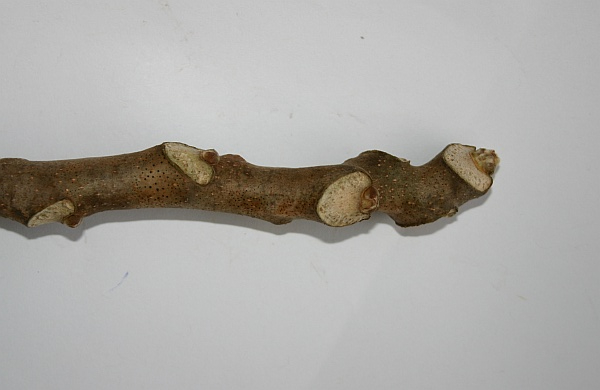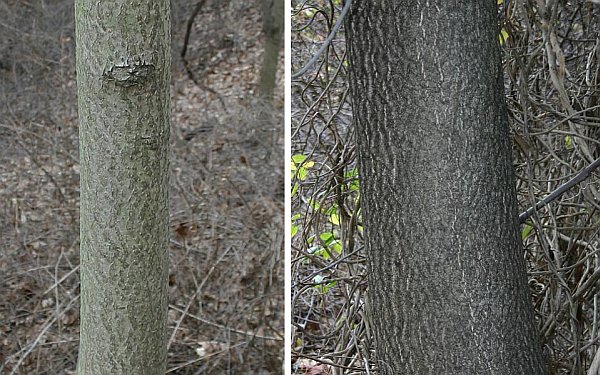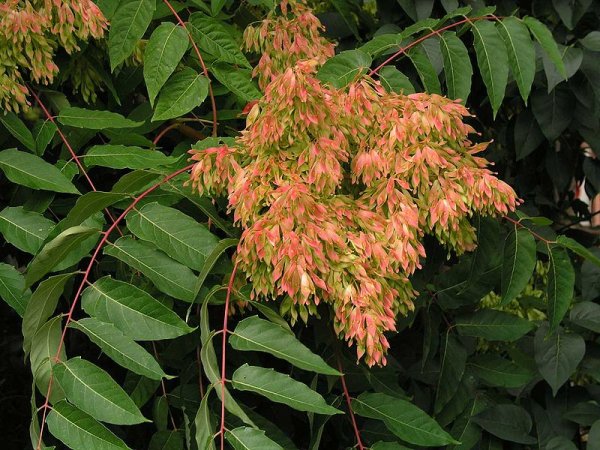
Today’s tree is a noxious weed that goes by many names: Ailanthus, Tree-of-heaven, Chinese Sumac, Stink Tree and The Tree From Hell. Some people call it simply “Sumac” but that’s one thing it is not. Though its leaves are similar, it’s not related to sumac.
Ailanthus altissima is native to China and Taiwan, first brought to North America as seed in 1784. In the 1800’s it was planted as a street tree but quickly became invasive. Nowadays no one will buy this tree. People spend money trying to get rid of it.
It earned its name Stink Tree because the male flowers smell bad, something between cat pee and rotting cashews. When ailanthus was planted as an ornamental, the nurseries sold only female trees.
Though ailanthus typically lives only 50 years, it grows anywhere humans have abused air, land or water. It doesn’t flinch in the face of sulfur dioxide, mercury and ozone. (It actually absorbs sulfur dioxide in its leaves.) It can grow with water polluted by acid mine drainage, in soil low in phosphorous and high in salinity. The only thing it doesn’t tolerate is dense shade. This adds up to a very successful roadside weed that thrives in the face of air pollution and road salt.
Ailanthus is prolific and hardy, able to grow from its huge seed production or from root stock. The roots sprout so well that it’s almost impossible to eradicate the tree. And it grows really fast! 3.3 to 6.6 feet per year in its first four years. Not only that, it produces a chemical that kills other species. Experiments with ailanthus extract demonstrated that it’s an effective herbicide against almost every other seedling.
With all these disadvantages, it pays to know what ailanthus looks like. It’s easy to identify in winter by the stout twig, pictured above, that ends abruptly without tapering. Its orange-brown twig is as big around as your finger with large, heart-shaped, alternate leaf scars and a small bud in the notch of each heart.

Ailanthus bark is very smooth with small pits on younger trees (shown at left) and interlacing ridges on older trees (shown at right). Learn the twig first, then you’ll remember the bark.
So, what good can be said about this tree?
It will be the last tree standing when the world comes to an end. Its hardiness gave it a brief literary and stage career as “The Tree” in A Tree Grows in Brooklyn.
(photos by Kate St. John)
p.s. Here’s what its leaves and seeds look like in autumn.

I had a few of these show up in the yard…I usually scrape the bark and if it smells like PEANUTS, it get cut and dug out. Doesn’t matter what size the seedling is…it has this smell.
I have a very tall one I need to get rid of, but I don’t know how. Can anyone advise?
I’ve been trying for 11/2yrs it is the wildest journey
Thanks for the info and photos! I think the Purple Finches who visited today were feeding on the seed pods of one of these. There, something positive!